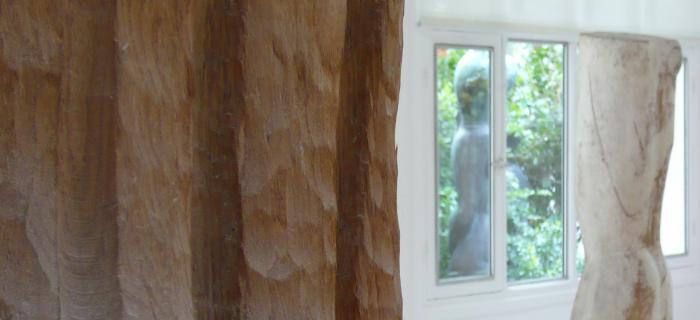DÉCOUVREZ LES 14 MUSÉES DE LA VILLE DE PARIS
Main menu

In the garden studio which Zadkine had built in the 1950s, a collection of works evoke the working of materials and emphasises the question of its execution. A large figure in elm wood representing Prometheus from the years 1955-56 dominates, presented on the floor, in order to restore it to its status as a block in the process of creation. It is echoed by a plaster moulding of the head of this figure holding in its hand the fire brought to man, a reference to the question of multiplicity.
In parallel to this block of elm, left untreated in its lower part, a block of granite taken from a quarry, which had always been in the museum garden and which bears the trace of an outline of a torso, has been stood up, reflecting the work carried out, the transformation of material and the emergence of form. A small piece of wood found by Zadkine at the end of the 1940s at the time of his return from the United States, in a bag of coal - which inspired his Orpheus, present in the background in the garden and which he decided to raise up to the rank of a work in its own right by installing it on a makeshift stand – speaks within the confines of this studio of the emergence of inspiration.
A group entitled The Sculptor, consisting of a head of a man in stone dating from 1922, an engraved lead sheet and an extremely rare painting on glass, combining sculpture, drawing and engraving, symbolises the different techniques which Zadkine employed. This “en abyme” composition, a representation of the artist by himself, and a synthesis of his work and his taste for archaism and neoclassicism combined, is particularly rich in meaning. This exceptional loan from the Pompidou Centre is the high point of the new presentation of the collections.